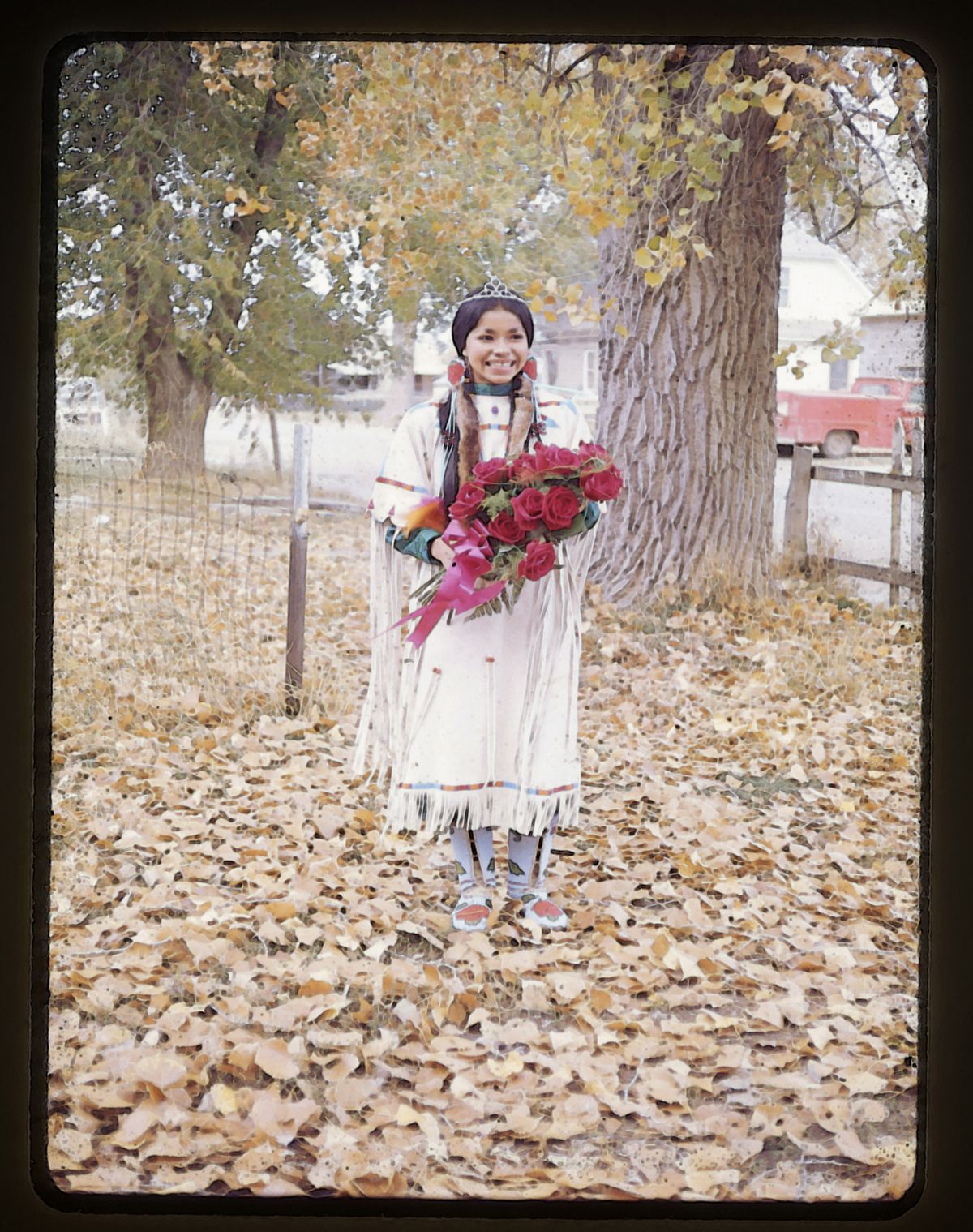Artist views Native life with modern lens
Wendy Red Star conveys Indian experience with humor, humanity

Wendy Red Star recognized Chief Medicine Crow on the cover of a textbook and on the label of her Honest Tea, among other places.
It was clear: When designers needed a picture of an “Indian brave,” they turned again and again to images of the Crow leader. His profile is strong. He has feathers in his hair. But Red Star, an artist in Portland who’d grown up on the Crow Indian Reservation in Montana, wanted to know more.
She did her research. And in a piece called “Peelatchiwaaxpáash/Medicine Crow (Raven),” shown last fall at the Portland Art Museum, Red Star filled in the details. Using red ink and a reproduction of a photo made by a government photographer in 1880, she outlined the chief’s finery and added notes about his life.
Chief Medicine Crow was a tribal judge, she wrote. He had six wives. To earn the bows in his hair, he’d slit two enemies’ throats.
For Red Star, 33, who’ll lecture and show her work next week in the Spokane area, the idea was to humanize a man whose actual life is less famous than his image.
That’s the aim of much of her art.
“I want to make sure that people walk away with a better understanding that we all are human beings … to really kind of humanize Native folks,” Red Star said. “Native people today are just as relevant as our ancestors were in the past. We aren’t invisible, and we aren’t any less authentic.”
Red Star works in a variety of media. Her fiber work blends traditional and contemporary elements: Rez Car Shawl, Basketball Shawl. Her photographs combine stereotypical and authentic images, references to the past and modern day. Many are self-portraits.
They’re often funny. Her “White Squaw” series features Red Star – tongue to tomahawk, or spooning up a mouthful of what looks like Land O’Lakes butter – in place of the original models on the paperbacks’ covers.
The humor offers “a way in for outsiders,” said Jenny Hyde, an art professor at Eastern Washington University and an organizer of the lecture series that’s bringing Red Star to town.
Hyde saw a piece by Red Star last spring at the National Museum of the American Indian in Washington, D.C. In “The (HUD),” Red Star has manipulated photos of reservation houses, stacking them tall.
“It resonates – this very honest, contemporary, almost explanation of Native culture,” Hyde said.
Red Star grew up on the reservation with a Crow father and an Irish-American mother.
The exhibition at SFCC, “Circling the Camp,” is about Crow Fair, a massive annual encampment near Billings she attended as a child.
Red Star created a series of images using her father’s old slides of Crow Fair parades, removing the backgrounds to let the viewer focus on the people.
“I really want spectators to be able to go in and be able to truly appreciate those parade riders,” she said.